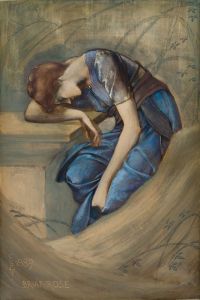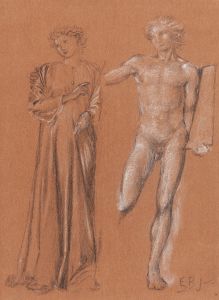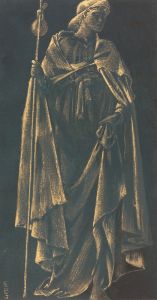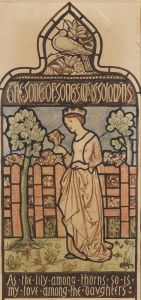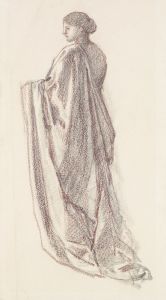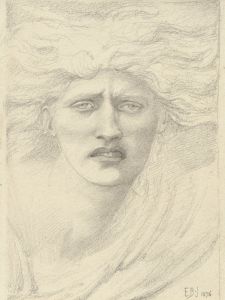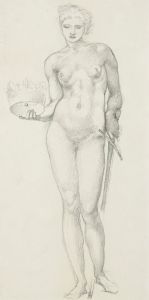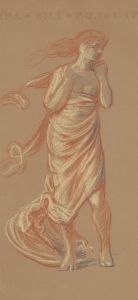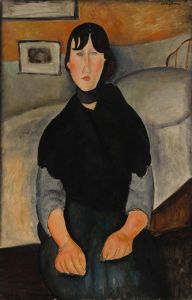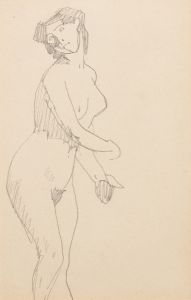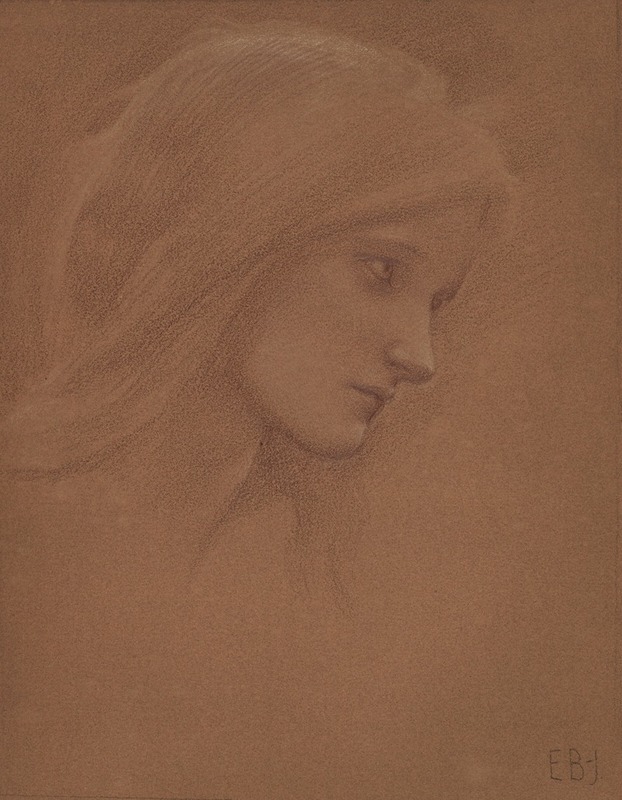
Head of a young girl
A hand-painted replica of Sir Edward Coley Burne-Jones’s masterpiece Head of a young girl, meticulously crafted by professional artists to capture the true essence of the original. Each piece is created with museum-quality canvas and rare mineral pigments, carefully painted by experienced artists with delicate brushstrokes and rich, layered colors to perfectly recreate the texture of the original artwork. Unlike machine-printed reproductions, this hand-painted version brings the painting to life, infused with the artist’s emotions and skill in every stroke. Whether for personal collection or home decoration, it instantly elevates the artistic atmosphere of any space.
"Head of a Young Girl" is a painting by the British artist Sir Edward Coley Burne-Jones, a prominent figure in the Pre-Raphaelite Brotherhood and the later Aesthetic Movement. Burne-Jones is renowned for his romantic and often mystical style, which frequently drew upon themes from mythology, literature, and medieval history. His works are characterized by their intricate detail, ethereal beauty, and a sense of otherworldliness.
The painting "Head of a Young Girl" exemplifies Burne-Jones's skill in portraiture and his ability to capture the delicate features and serene expressions that are hallmarks of his work. Although specific details about the painting's creation, such as the exact date or the identity of the model, are not widely documented, it is consistent with Burne-Jones's oeuvre from the latter half of the 19th century, a period during which he produced many portraits and studies of idealized female figures.
Burne-Jones's art was heavily influenced by his close association with other members of the Pre-Raphaelite Brotherhood, such as Dante Gabriel Rossetti and William Morris. This group sought to return to the detail, intense colors, and complex compositions of Quattrocento Italian art, rejecting the academic standards of their time. Burne-Jones, in particular, was known for his meticulous approach to painting, often spending years perfecting a single piece.
"Head of a Young Girl" likely reflects Burne-Jones's fascination with beauty and his pursuit of an idealized form. The subject's gentle expression and the soft rendering of her features are typical of his portraits, which often convey a sense of introspection and calm. The use of light and shadow in the painting would have been carefully considered to enhance the three-dimensionality of the face and to imbue the image with a sense of life and presence.
Burne-Jones's work, including "Head of a Young Girl," played a significant role in the broader Aesthetic Movement, which emphasized art for art's sake and the pursuit of beauty over moral or narrative content. This movement was a reaction against the industrialization and materialism of the Victorian era, seeking instead to elevate the importance of beauty and artistic expression.
The legacy of Burne-Jones and his contemporaries can be seen in the continued appreciation for Pre-Raphaelite art and its influence on later artistic movements. His works are housed in major collections around the world, including the Tate Britain and the Birmingham Museum and Art Gallery, where they continue to be studied and admired for their technical skill and enchanting beauty.
In summary, "Head of a Young Girl" is a testament to Sir Edward Coley Burne-Jones's mastery of portraiture and his dedication to capturing the ethereal beauty that defines much of his work. While specific details about this particular painting may be limited, its style and execution offer insight into the broader themes and techniques that characterize Burne-Jones's contributions to 19th-century art.







